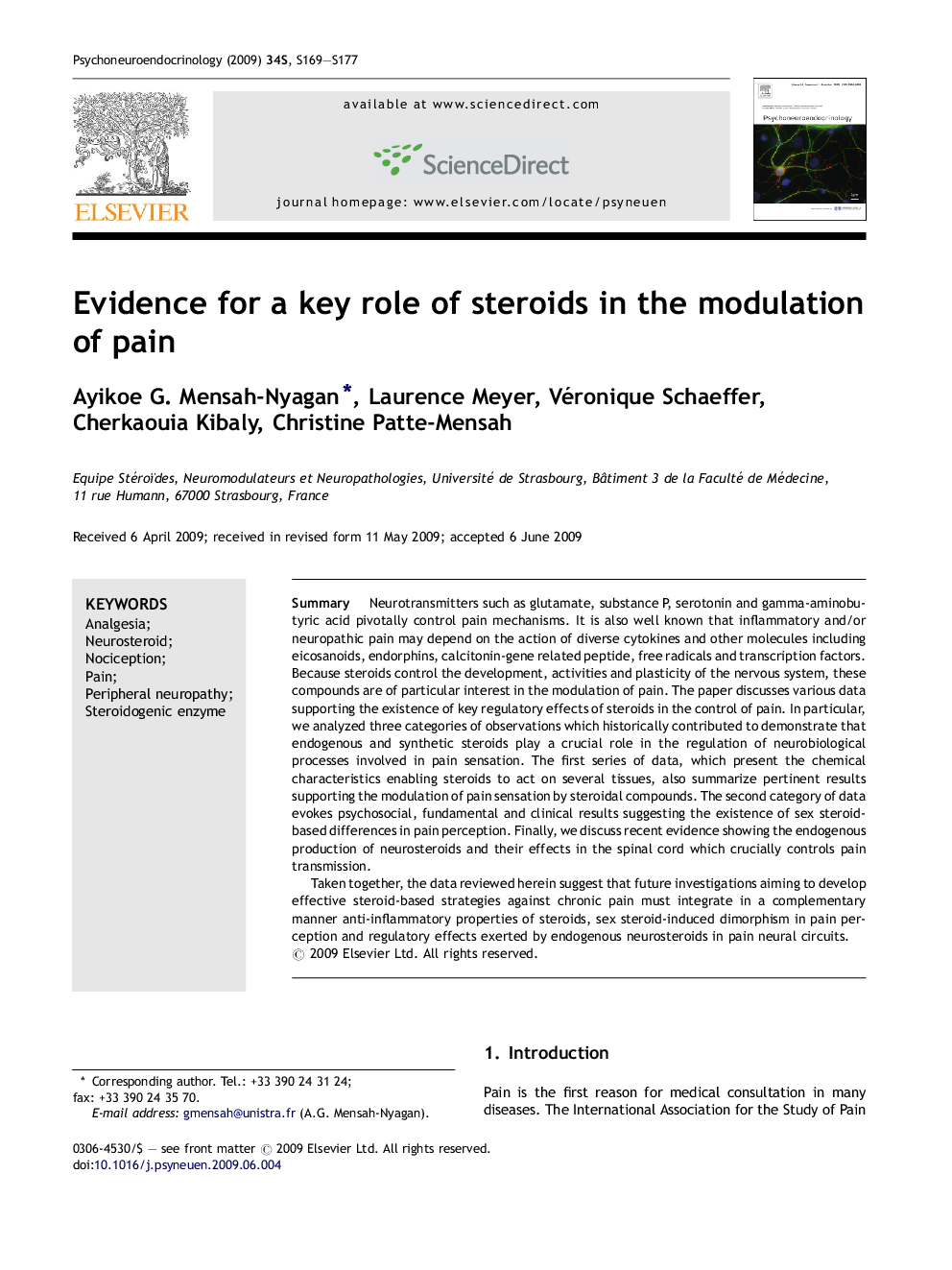| Article ID | Journal | Published Year | Pages | File Type |
|---|---|---|---|---|
| 336769 | Psychoneuroendocrinology | 2009 | 9 Pages |
SummaryNeurotransmitters such as glutamate, substance P, serotonin and gamma-aminobutyric acid pivotally control pain mechanisms. It is also well known that inflammatory and/or neuropathic pain may depend on the action of diverse cytokines and other molecules including eicosanoids, endorphins, calcitonin-gene related peptide, free radicals and transcription factors. Because steroids control the development, activities and plasticity of the nervous system, these compounds are of particular interest in the modulation of pain. The paper discusses various data supporting the existence of key regulatory effects of steroids in the control of pain. In particular, we analyzed three categories of observations which historically contributed to demonstrate that endogenous and synthetic steroids play a crucial role in the regulation of neurobiological processes involved in pain sensation. The first series of data, which present the chemical characteristics enabling steroids to act on several tissues, also summarize pertinent results supporting the modulation of pain sensation by steroidal compounds. The second category of data evokes psychosocial, fundamental and clinical results suggesting the existence of sex steroid-based differences in pain perception. Finally, we discuss recent evidence showing the endogenous production of neurosteroids and their effects in the spinal cord which crucially controls pain transmission.Taken together, the data reviewed herein suggest that future investigations aiming to develop effective steroid-based strategies against chronic pain must integrate in a complementary manner anti-inflammatory properties of steroids, sex steroid-induced dimorphism in pain perception and regulatory effects exerted by endogenous neurosteroids in pain neural circuits.
